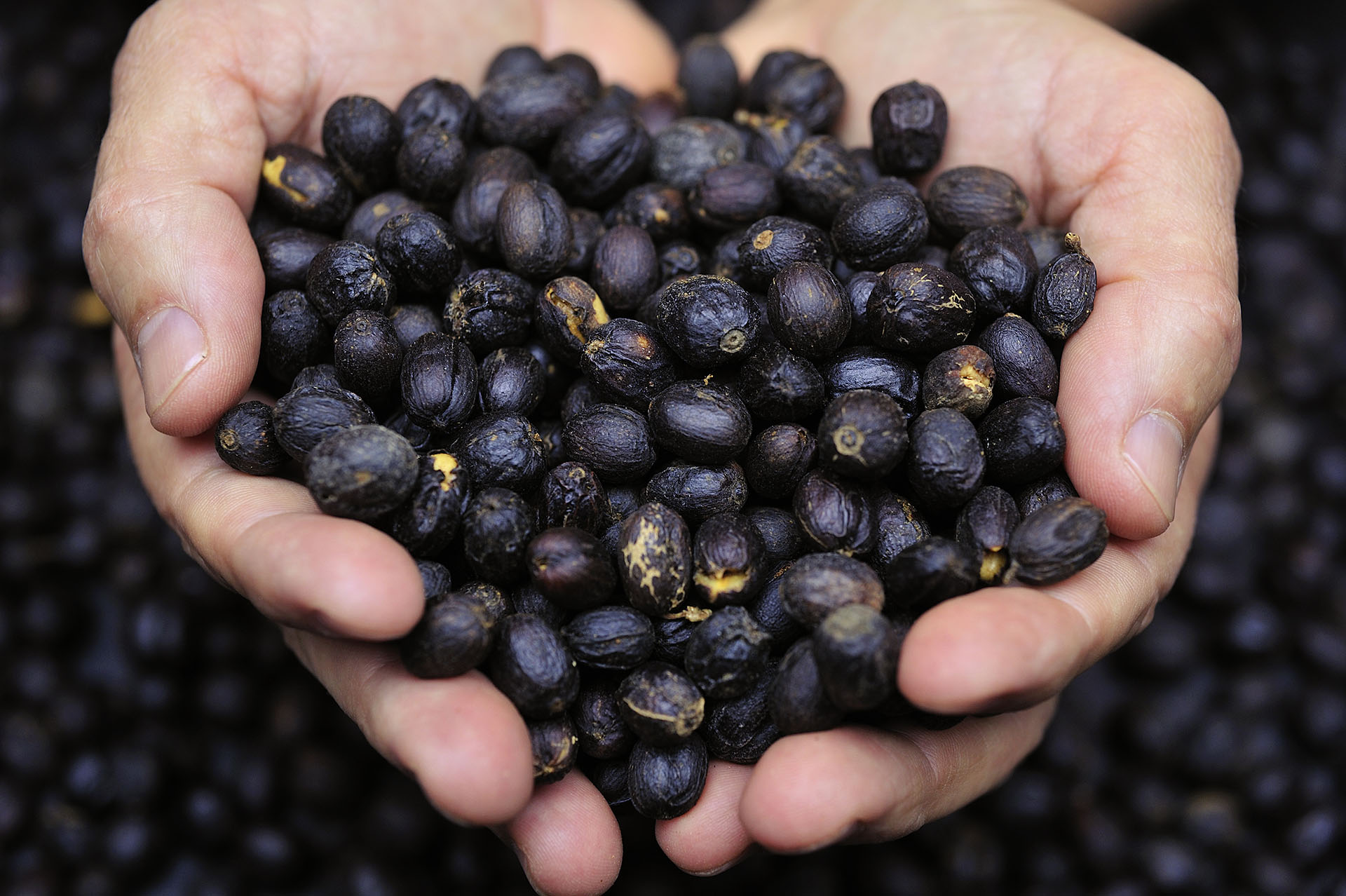Did you know that coffee from the same plantation, the same harvest and identical variety can taste completely different? How is it possible? Coffee processing – that is the secret. Wet, dry and more. Let’s check what the magic is about.
The coffee is processed even before it gets to the roaster. This is the first phase, immediately after the harvest. Harvested coffee cherries contain raw beans which need to be taken out after the surrounding flesh is removed. You can do that in different ways called processing methods.
Dry/natural process
The oldest processing method. It requires no water consumption, which is of particular importance in the countries suffering from its deficit. After the harvest, the cherries are dried in the full sun on a concrete patio for several days until the pulp gets brittle and can easily fall off the beans. Then, the beans are dried again, without the pulp, until they reach the adequate moisture level. Coffee processing using the dry method results in a characteristic intense fruity flavor profile, reminiscent of jam. It gives a full body and sweetness combined with lower acidity than in the case of wet-processed coffees. As no water is used, the beans are not rinsed, which may result in coffees with dirty aftertaste. Today, however, the dry process on specialty plantations has been refined and is very popular.
Coffee processing using the dry method results in a characteristic intense fruity flavor profile, reminiscent of jam.

Wet/washed process
Coffee processing using the wet method is a multi-step process with the use of water. First, the cherries are placed in a device called depulper which is a mechanical grater removing pulp from the beans inside. Then, the beans with the remains of pulp on them go to fermentation pools where, for a definite period of time, they are subjected to closely controlled fermentation process. It allows for getting rid of the remaining pulp off the beans. Additionally, the beans are rinsed, which removes any “dirty” accents.
The wet process does not mean that there is no phase of drying. It cannot be skipped. Too wet beans can be easily attacked by mold. Therefore, the beans are dried on special tables or concrete to obtain a suitable moisture content within the limits of 11-14%.

This type of treatment allows for more control and modification of a sensory profile. Additionally, thanks to the use of water, “washed” coffees have gentler, more noble sensory profile, and more intense acidity than those dry-processed. Most coffees of the specialty segment come from this processing method.
It is also the most demanding and expensive process, since it requires a mill to be built on the farm or else the beans need to be transported to an existing mill where the entire processing takes place. Moreover, the mills located in cooperatives of farmers still do not work at the highest level and the intense process to improve their work started just a few years ago. On the other hand, private construction of the mill for a single plantation is quite expensive and only a few farmers can afford such luxury, although it allows to achieve the top quality.
“Washed” coffees have a gentler, more noble sensory profile with more intense acidity than those that have been dry processed. Most coffees of the specialty segment come from this processing method.
Honey/pulped natural process
The method of coffee processing called honey. Yes. Bears love it. At least the coffee ones. The process is a combination of the previous two. At the initial stage, the beans are automatically ripped off the outer pulp and then they are left together with the remaining pulp to dry in the sun. The beans are then stuck together and look like covered in honey. Hence that really suggestive and promising name. The drying continues until the moisture content is around 11-12%.
This method provides coffee with high sweetness, a very fruity profile and delicate sweet acidity. It is also more repeatable than the dry process and gives a fuller body than the wet process. The country where the percentage of coffee produced using this method is the highest is Brazil. This method is also successfully used, among others, in Costa Rica.
Coffees with high sweetness, very fruity profile and delicate sweet acidity.
The effect in a cup
A processing method is one of the most significant parts of coffee production that influence the final taste. When you select your beans, it is worth paying attention to this factor and looking for coffee from the same locations but processed using various methods, which will let you best sense the differences following from this phase of coffee production. It is very easy to identify the differences between particular processing methods, especially when you brew using alternative methods, such as in a drip, chemex or aeropress.









